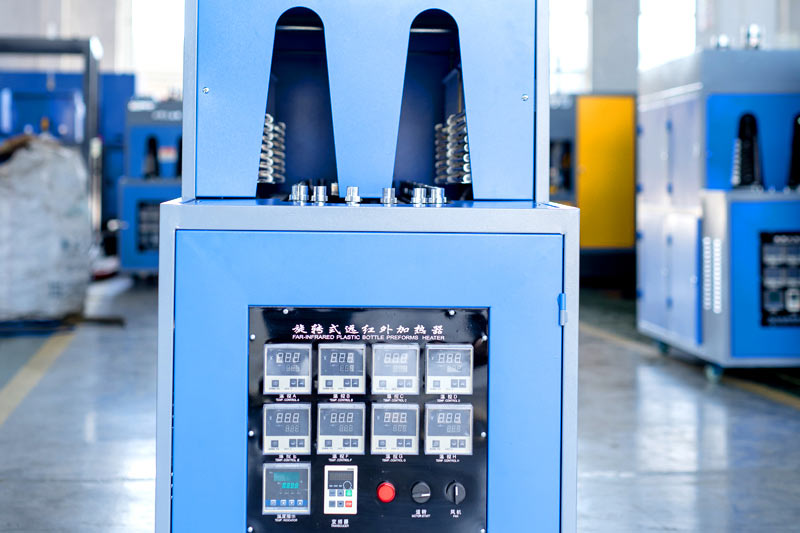At present, most blow molding machines are still two-st […]
At present, most blow molding machines are still two-step blow molding machines, that is to say, plastic raw materials must be made into preforms and then blow molded. Currently, PET materials are usually used.
Blowing principle
The blow molding process of the blow molding machine is divided into two parts.
Warm up
Irradiate the preform (embryo) with an infrared high-temperature lamp, and heat and soften the body part of the preform. In order to maintain the shape of the bottle mouth, there is no need to heat the preform opening, so a certain cooling device is required to cool the bottle.
Blow molding
At this stage, the pre-heated preform is put into the prepared blow mold, and the interior is inflated with high pressure. Blow the preform (preform) into the desired bottle.
The automatic blow molding machine combines the two operations of blowing the bottle through the operation of the robot, so that there is no need to manually put the preheated preform into the blow molding process. Greatly speed up productivity.

Bottle blowing machine process
The blow molding process of the blow molding machine is a two-way stretching process. In this process, the PET chain extends in both directions, oriented and aligned, thereby increasing the mechanical properties of the bottle wall and improving the tensile strength, tensile strength and impact strength. And has good air tightness. Although stretching helps increase strength, it should not be overstretched, and the ratio of stretching and expansion should be controlled: the radial direction should not exceed 3.5 to 4.2 times, and the axial direction should not exceed 2.8 to 3.1 times. The wall thickness of the preform should not exceed 4.3 mm.
Blowing is carried out between the glass transition temperature and the crystallization temperature, usually controlled between 90 and 110 degrees. In this interval, PET is in a highly elastic state, which can be blow molded quickly, cooled and formed into a transparent bottle.
In the blow molding process: stretching-one blowing-two blowing, these three actions are very short, but must be well coordinated, especially the first two steps determine the overall distribution of the material and the quality of the blow molding. Therefore, the following parameters should be set: stretch start time, stretch speed, pre-blow molding start and end time, pre-blow molding pressure, pre-blow molding flow rate, etc. If possible, it is best to control the overall temperature distribution of the container preform. The temperature gradient between the inner and outer walls of the preform.
During the rapid blowing and cooling process, induced stresses are generated in the bottle wall. For carbonated beverage bottles, it can resist internal pressure and is beneficial, but for hot-filled bottles, it must be completely released above the glass transition temperature.
What materials are used in the operation of the automatic bottle blowing machine? This is actually very simple
1. Polyethylene terephthalate——01 PET is suitable for mineral water bottles and carbonated beverage bottles
2. High-density polyethylene————02 HDPE is suitable as a container for cleaning liquid and bath products
3. Polyvinyl Chloride————03 PVC is suitable for container for architectural coatings
4. Low-density polyethylene——04 LDPE is suitable for use as cling film, plastic film and other sealed materials
5. Polypropylene—————05 PP This type of material has a temperature above 100 degrees, suitable for microwave lunch boxes
6. Polystyrene————06 PS, heat-resistant 60-70 degrees, filled with overheated liquid or water, will release toxic materials, suitable for bowls of instant noodle boxes, fast food boxes